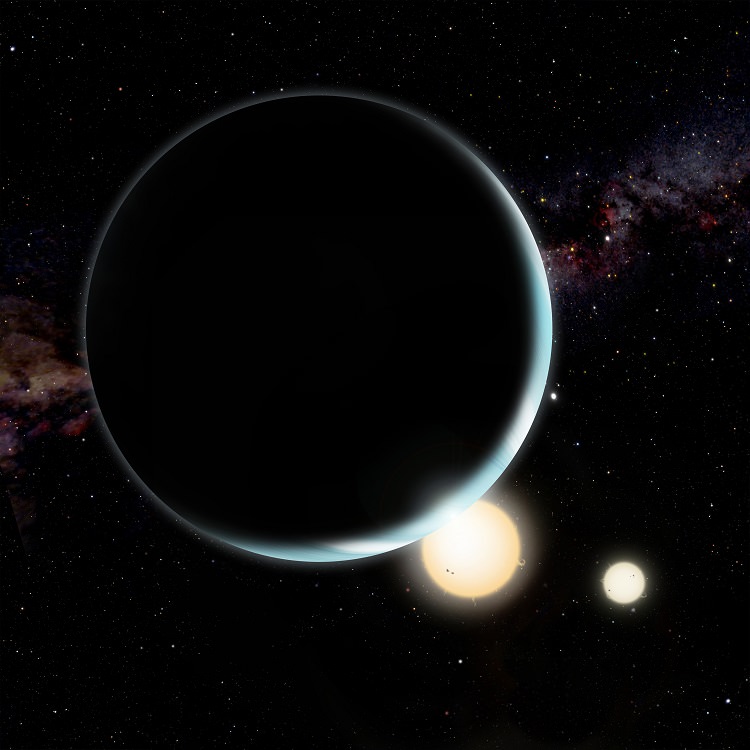Binary star systems are downright dangerous due to their complex gravitational interactions that can easily grind a planet to pieces. So how is it that we have found a few planets in these Tattooine-like environments?
Research led by the University of Bristol show that most planets formed far away from their central stars and then migrated in at some point in their history, according to research collected concerning Kepler-34b and other exoplanets.
The scientists did “computer simulations of the early stages of planet formation around the binary stars using a sophisticated model that calculates the effect of gravity and physical collisions on and between one million planetary building blocks,” stated the university.
“They found that the majority of these planets must have formed much further away from the central binary stars and then migrated to their current location.”
You can read more about the research in Astrophysical Journal Letters. It was led by Bristol graduate student Stefan Lines with participation from advanced research fellow and computational astrophysicst Zoe Lienhardt, among other collaborators.

